NEW YORK--(BUSINESS WIRE)--Nov 7, 2024--
According to a report released today by Carbon Direct, the voluntary carbon market is at a key inflection point: carbon dioxide removal (CDR) is growing rapidly, however it still only represents 4% of available carbon credits in today's US$1 billion market. Carbon Direct’s analysis found that while there is oversupply in the broader market, demand for high-quality CDR is outstripping the supply for these credits. At the same time, the majority of forward CDR offtakes in 2024 came from a very small cohort of first movers.
This press release features multimedia. View the full release here: https://www.businesswire.com/news/home/20241107941184/en/
Global climate targets call for removing 5-10 billion tonnes of CO 2 annually by 2050 – a transformation requiring trillions in capital investment. However, concentrated demand, the need for rapid scale, and the scarcity of quality projects all represent critical challenges in meeting these targets. Carbon Direct’s analyses suggest demand of ~50 million tonnes annually by 2030. There is currently project finance available for less than half of these volumes, and 50 million tonnes is less than 5% of the new CDR needed to align with scaleup trajectories in some 1.5°C scenarios.
"The CDR market is at a crucial inflection point," said Matthew Potts, Chief Science Officer at Carbon Direct. "While we're seeing ambitious scale-up plans from high-durability CDR projects and increased funding for nature-based solutions, the market urgently needs more buyers and investors to step forward to realize this potential."
>> Read the Report: 2024 State of the Voluntary Carbon Market
The 2024 State of the Voluntary Carbon Market report analyzes data from major carbon credit registries and Carbon Direct's extensive project evaluations. Key findings from this year's analysis include:
"To meet global climate goals, we need to see a significant acceleration in both investment in nature-based CDR and forward purchasing of high-durability CDR solutions," Potts continued, "The VCM serves as a critical vehicle for channeling finance to CDR projects."
The report emphasizes that reaching climate targets will require the development of mature market structures for project development and finance backed by bankable offtake agreements. Projects must also demonstrate high quality and transparency to address buyer concerns and reduce reputational risks. For more information, read the full report: The 2024 State of the Voluntary Carbon Market.
About Carbon Direct
Carbon Direct is the leader in science-based carbon management. We help emerging and established climate leaders like Microsoft, JPMorgan Chase, American Express, Mitsui O.S.K. Lines, JetBlue, and The Russell Family Foundation drive scalable and just impact through deep decarbonization strategies and carbon dioxide removal. With Carbon Direct’s scientific approach, organizations can confidently set targets and measure their emissions, implement reductions across their operations and supply chain, and build high-quality carbon dioxide removal into their climate plans to accelerate impact. To learn more visit: www.carbon-direct.com.
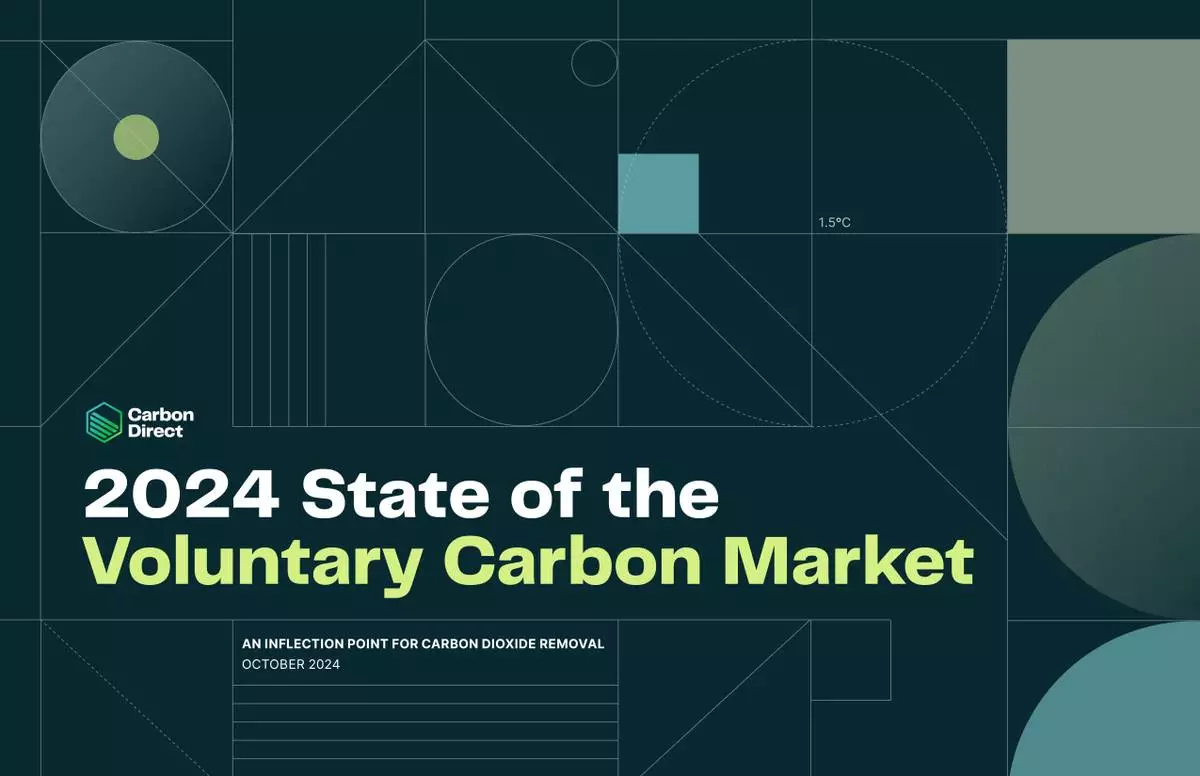

The 2024 State of the Voluntary Carbon Market report from Carbon Direct examines the key trends and developments shaping the voluntary carbon market, with a focus on carbon dioxide removal (CDR). The report includes insights and guidance for buyers and suppliers of CDR. To read the full report, visit: http://carbon-direct.com/research-and-reports/state-of-the-voluntary-carbon-market-2024 (Photo: Business Wire)
Wall Street pointed toward modest gains early Thursday after storming to records a day earlier on former President Donald Trump's presidential election victory.
Futures for the S&P 500 rose 0.3% before the bell and the Dow Jones Industrial Average ticked up 0.2%
Investors pored over a deluge of mixed corporate earnings reports as they prepare to turn their attention to the Federal Reserve’s decision on interest rates, due later in the day.
Lyft jumped close to 24% in extended trading overnight after the ride-hailing app breezed past Wall Street's sales and profit expectations and raised its forecast for the fourth quarter and full year.
Chipmaker Qualcomm climbed 7% after beat analysts' forecasts after its third-quarter net income nearly doubled from the same period a year ago. Arm Holdings also beat Wall Street targets, but the British chipmaker's guidance disappointed investors and its shares fell 6.5% before the bell.
Match Group tumbled 14% after the dating app brand missed revenue targets as its most popular app, Tinder, continued to underperform.
In Europe at midday, Germany’s DAX gained 0.8% the CAC 40 in Paris was nearly unchanged.
Britain's FTSE 100 edged down 0.2% after the Bank of England cut its main interest rate by a quarter of a percentage point to 4.75% on Thursday. The latest cut comes afte r inflation in the U.K. fell to an annual rate of 1.7%, its lowest level since April 2021.
Inflation in the U.S. has retreated on a similar track, and the broad expectation is that the Federal Reserve will cut its rate by another quarter-point later Thursday.
Much of Wall Street’s run to records this year was built on expectations for cuts to interest rates by the Federal Reserve, as inflation has headed back down to its 2% target. Easier interest rates help boost the economy, but they can also give inflation more fuel.
In Asia, Japan's Nikkei 225 fell 0.3% to 39,381.41, reflecting worries over the potential for a revival of trade tensions under a Trump administration.
“I think everybody’s going to be worried about Trump's tariffs because that’s one of the things in his playbook. And so we’ll have to see how things develop in the early stages of his presidency this time," said Neil Newman, head of strategy for Astris Advisory Japan.
South Korea's Kospi finished nearly flat, at 2,564.63. Australia's S&P/ASX 200 rose 0.3% to 8,226.30.
Chinese shares rallied after the government reported that exports jumped nearly 13% in October over a year earlier, the fastest pace in more than two years and far outpacing the 2.4% increase in September.
Hong Kong's Hang Seng gained 2% to 20,953.34. The Shanghai Composite index was up 2.6% at 3,470.66.
Trump has promised to slap blanket 60% tariffs on all Chinese imports, raising them still more if Beijing makes a move to invade the self-governing island of Taiwan.
Investors are adding to bets built earlier on what the higher tariffs, lower tax rates and lighter regulation that Trump favors will mean. Higher tariffs on imports from China would add to the burdens Beijing is facing as it struggles to revive slowing growth in the world's second-largest economy.
But the impact may be less drastic than feared, Zichun Huang of Capital Economics said in a report.
“We expect shipments to stay strong in the coming months –- any drag from potential Trump tariffs may not materialize until the second half of next year," Huang said.
Still, higher tariffs on imports from China, Mexico and other countries would raise the risk of trade wars and other disruptions to the global economy.
Trump's win raised expectations that Beijing may ramp up its spending and other stimulus to counter such trends. The Standing Committee of China's legislature is meeting this week and is expected to announce further measures by Friday.
Francis Lun, CEO of Geo Securities, said domestic issues were a greater concern than tariffs. "People want the government to spend some money to boost the economy, instead of looking outward,” he said.
In other dealings early Thursday, the U.S. dollar weakened against the Japanese yen, slipping to 153.86 yen from 154.62 yen. The euro rose to $1.0768 from $1.0730.
U.S. benchmark crude oil shed 75 cents to $70.94 per barrel. Brent crude, the international standard, lost 58 cents to $74.34.
The price of bitcoin settled in around $75,048 after hitting an all-time high above $76,480 on Wednesday. Trump has pledged to make the country “the crypto capital of the planet” and create a “strategic reserve” of bitcoin.
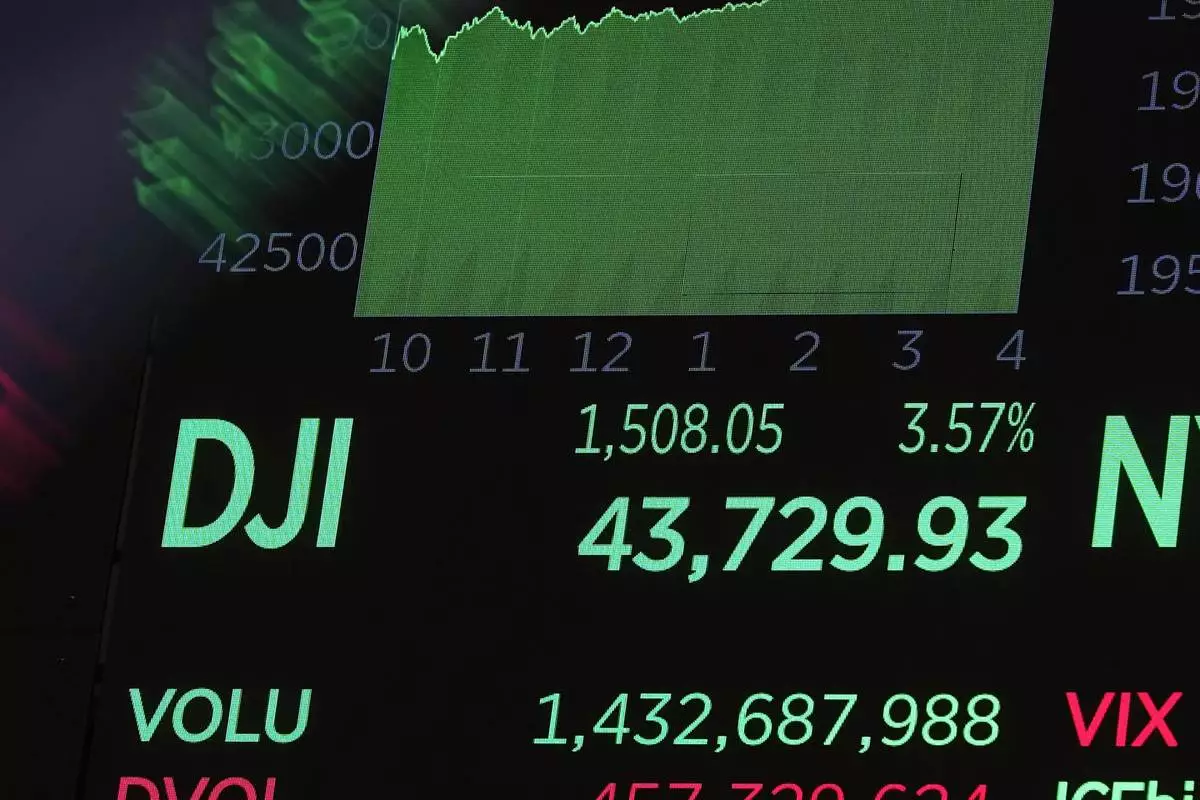
A board above the trading floor of the New York Stock Exchange shows the closing number for the Dow Jones industrial average, Wednesday, Nov. 6, 2024. (AP Photo/Richard Drew)

Trader Edward McCarthy works on the floor of the New York Stock Exchange, Wednesday, Nov. 6, 2024. (AP Photo/Richard Drew)
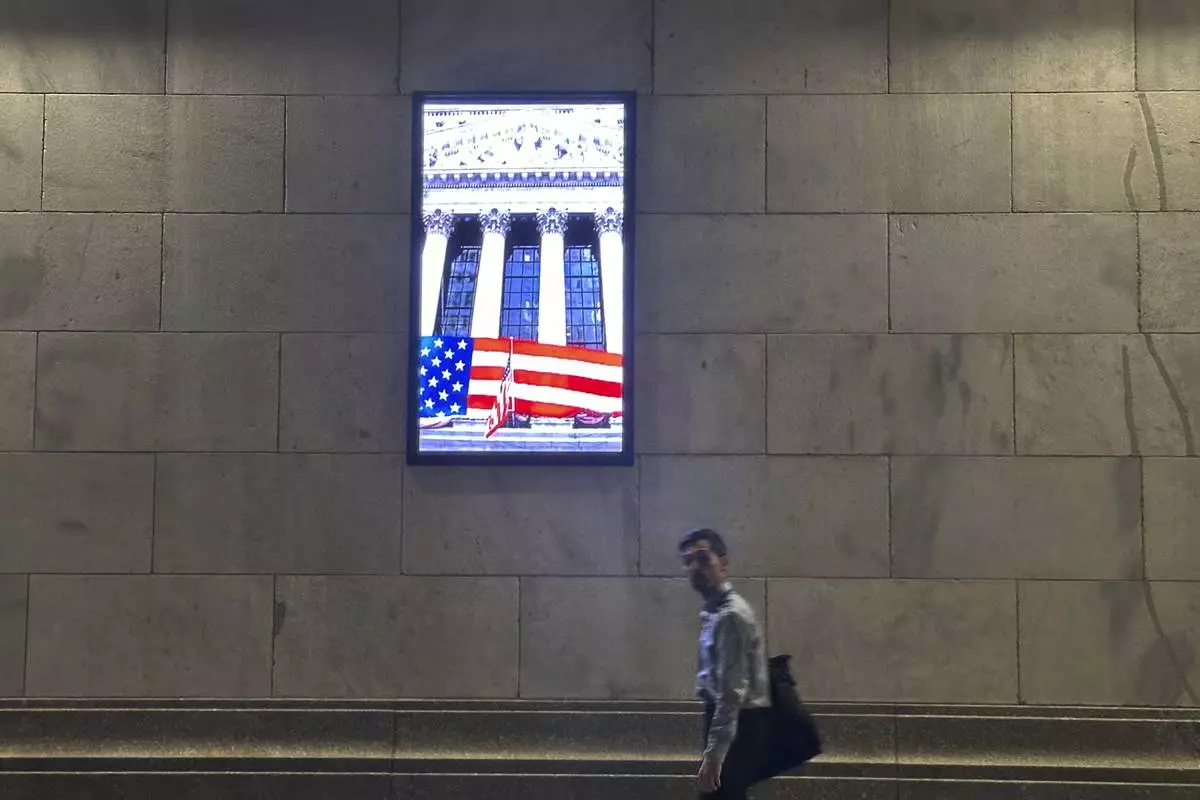
A man passes a video monitor on the side of the New York Stock Exchange in New York's Financial District on Tuesday, Nov. 5, 2024. (AP Photo/Peter Morgan)

A board above the trading floor of the New York Stock Exchange shows the closing number for the Dow Jones industrial average, Wednesday, Nov. 6, 2024. (AP Photo/Richard Drew)
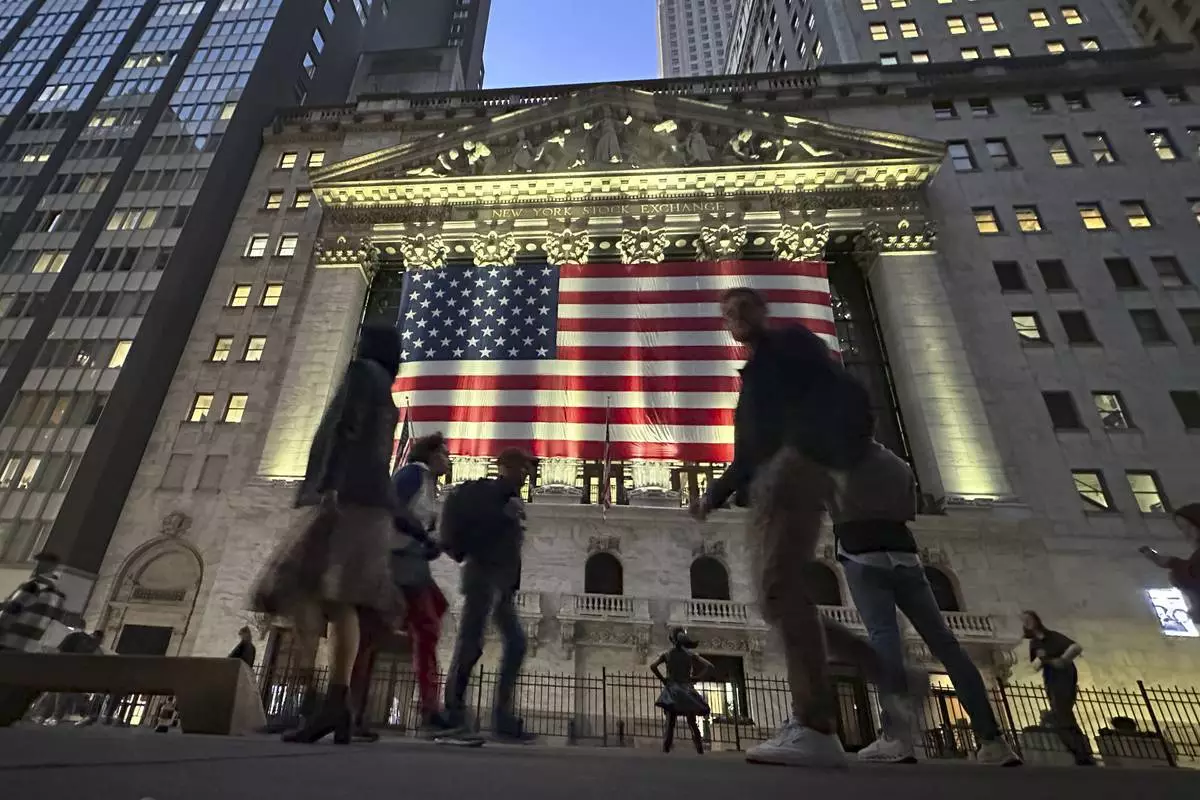
People pass the New York Stock Exchange in New York's Financial District on Tuesday, Nov. 5, 2024. (AP Photo/Peter Morgan)

A TV camera screen shows the foreign exchange rate between U.S. dollar and South Korean won and the Korean Securities Dealers Automated Quotations (KOSDAQ) at a foreign exchange dealing room in Seoul, South Korea, Thursday, Nov. 7, 2024. (AP Photo/Lee Jin-man)
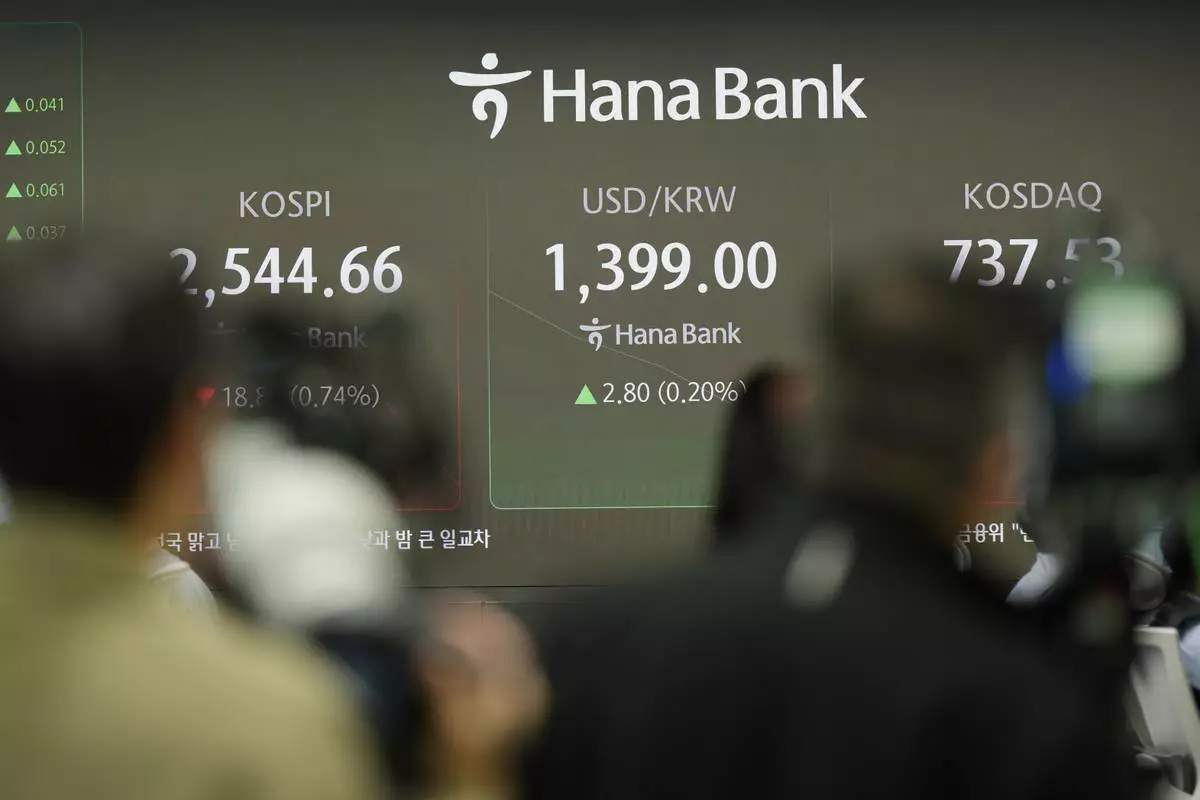
Members of media stand near the screens showing the Korea Composite Stock Price Index (KOSPI), left, the foreign exchange rate between U.S. dollar and South Korean won and the Korean Securities Dealers Automated Quotations (KOSDAQ) at a foreign exchange dealing room in Seoul, South Korea, Thursday, Nov. 7, 2024. (AP Photo/Lee Jin-man)
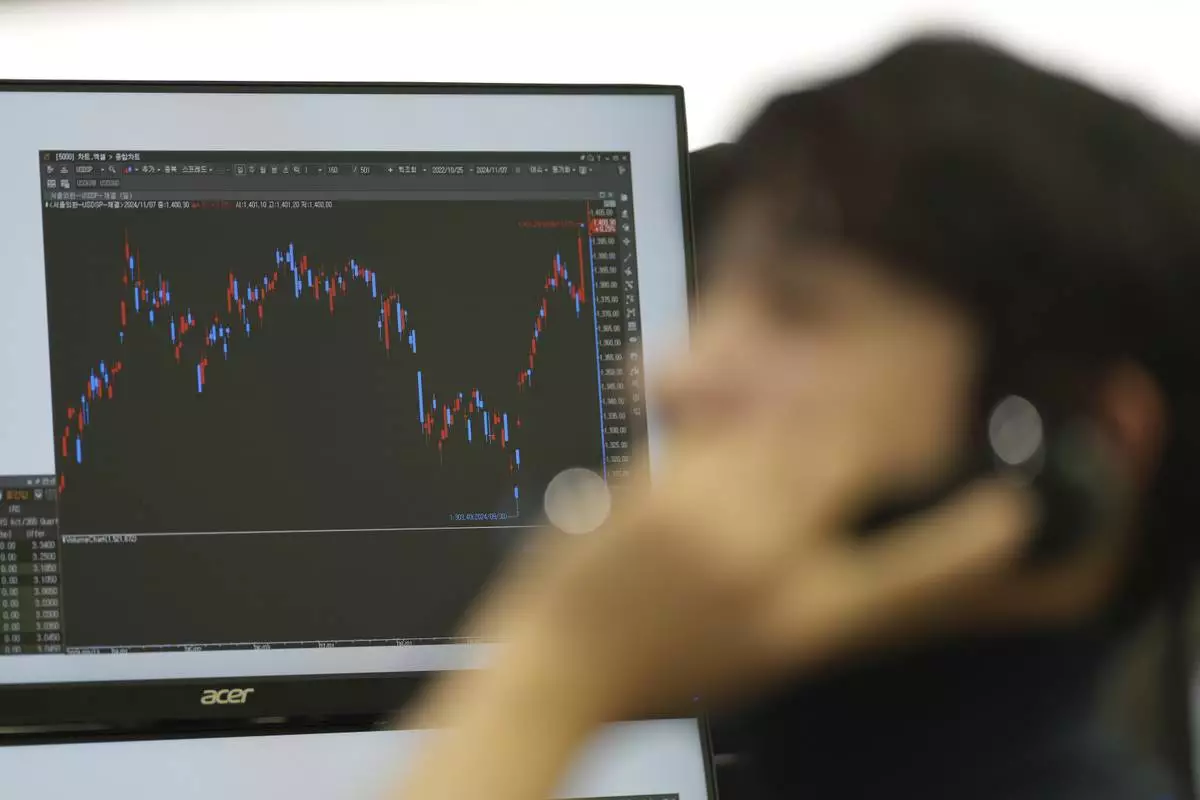
A currency trader talks on the phone at a foreign exchange dealing room in Seoul, South Korea, Thursday, Nov. 7, 2024. (AP Photo/Lee Jin-man)
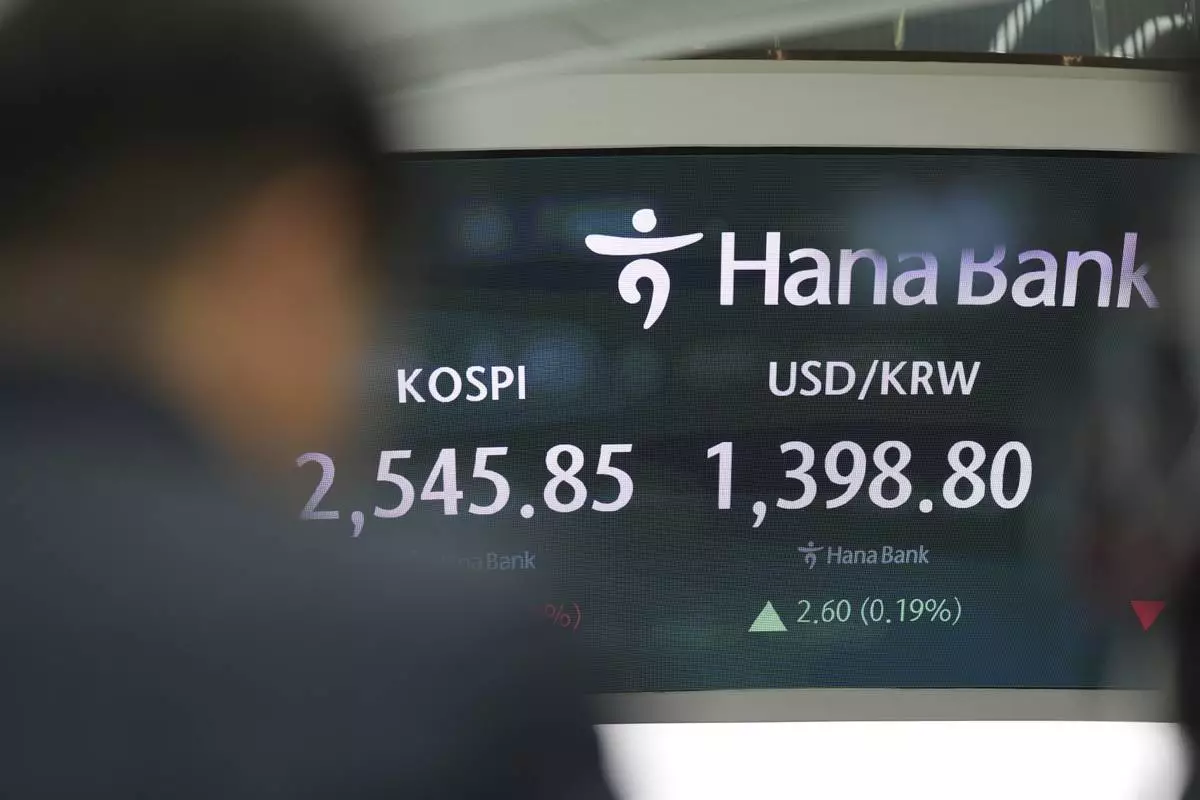
A tv cameraman films the screens showing the Korea Composite Stock Price Index (KOSPI), left, and the foreign exchange rate between U.S. dollar and South Korean won at a foreign exchange dealing room in Seoul, South Korea, Thursday, Nov. 7, 2024. (AP Photo/Lee Jin-man)
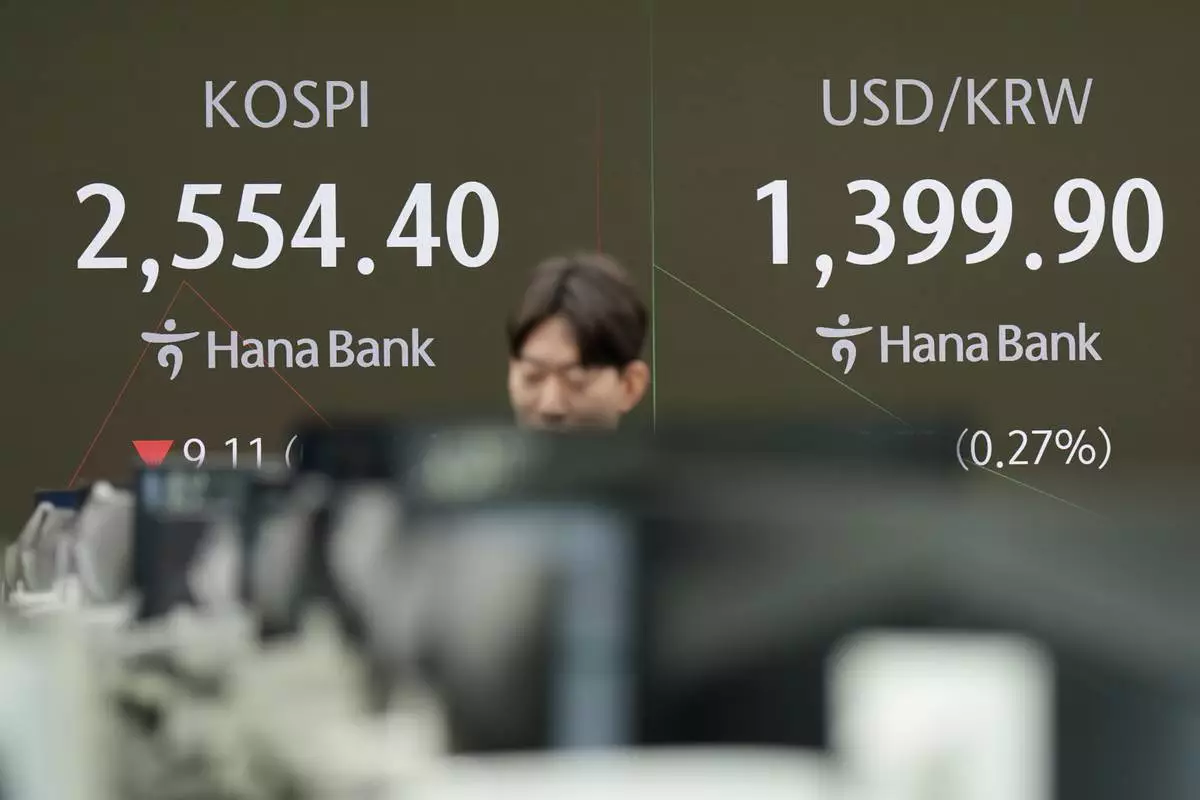
A currency trader walks by the screens showing the Korea Composite Stock Price Index (KOSPI), left, and the foreign exchange rate between U.S. dollar and South Korean won at a foreign exchange dealing room in Seoul, South Korea, Thursday, Nov. 7, 2024. (AP Photo/Lee Jin-man)
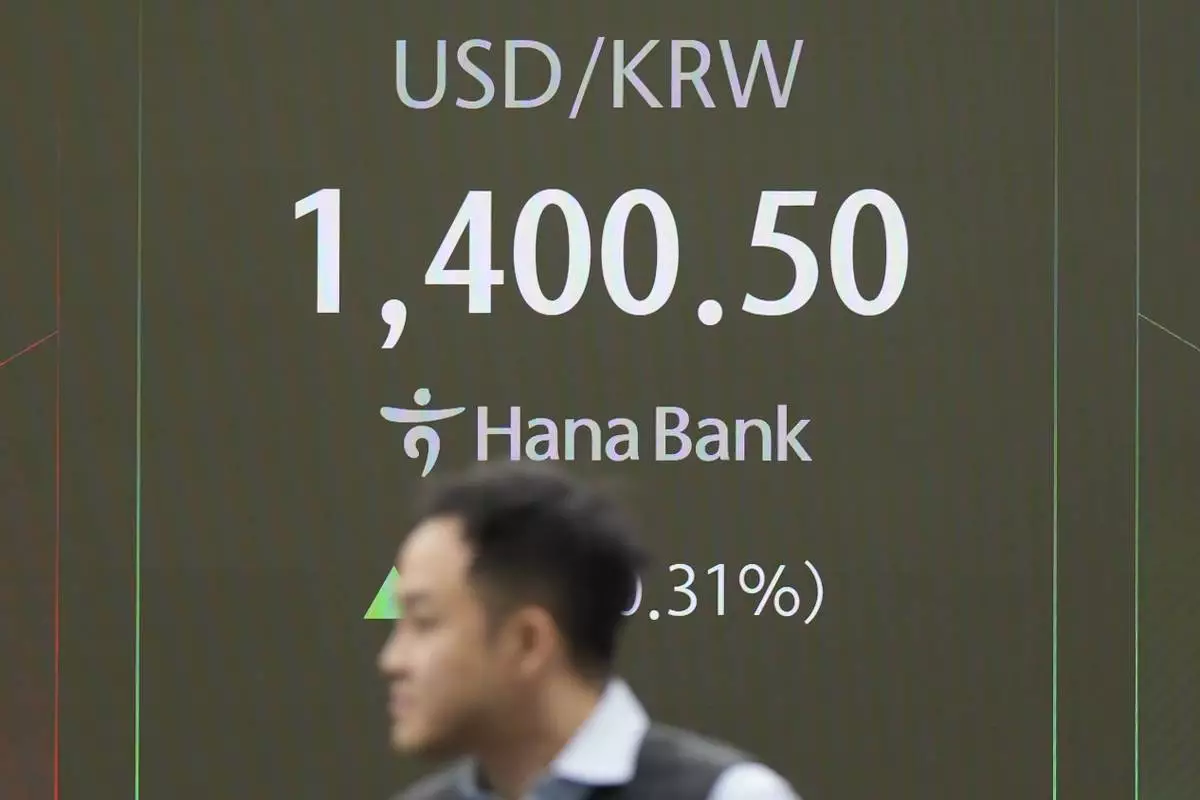
A currency trader walks by the screens showing the foreign exchange rate between U.S. dollar and South Korean won at a foreign exchange dealing room in Seoul, South Korea, Thursday, Nov. 7, 2024. (AP Photo/Lee Jin-man)






















